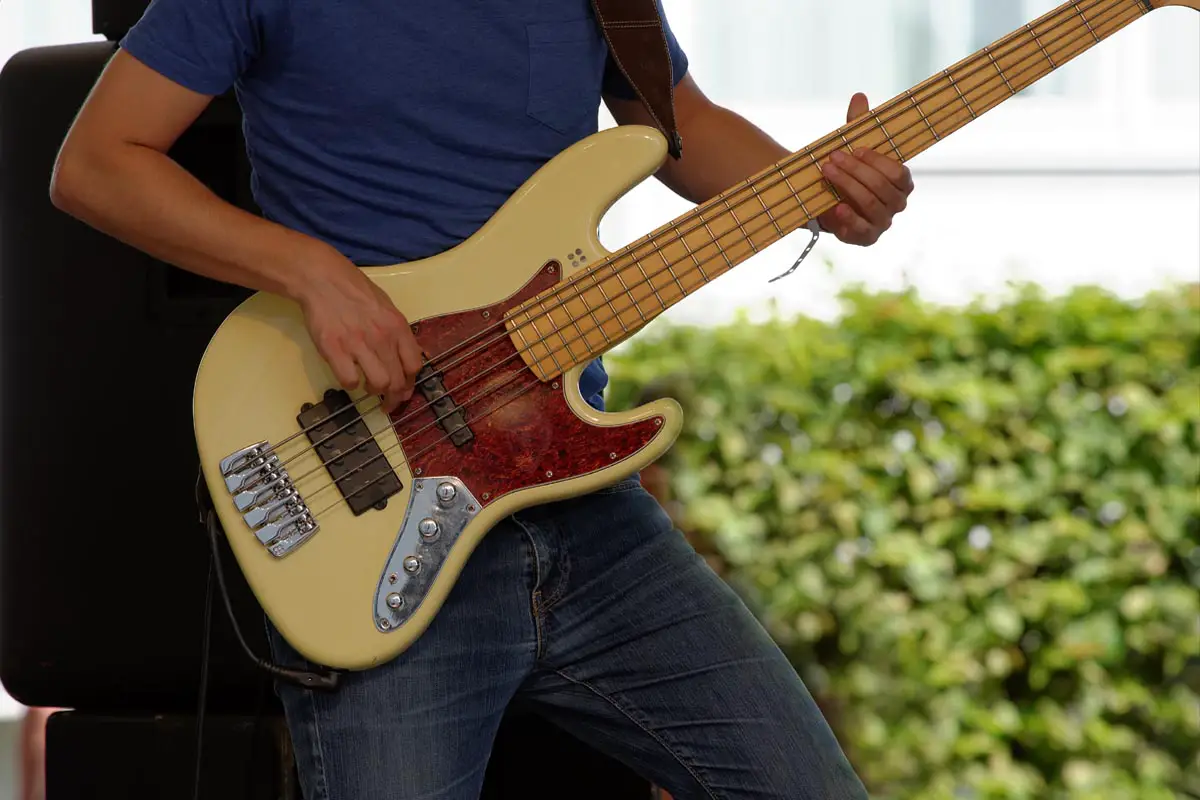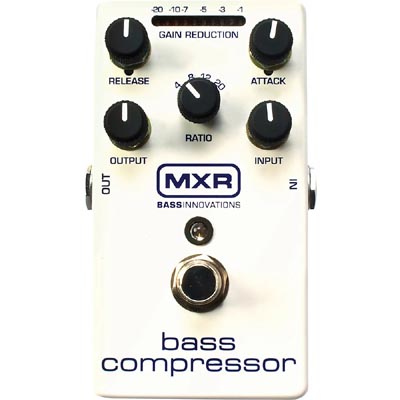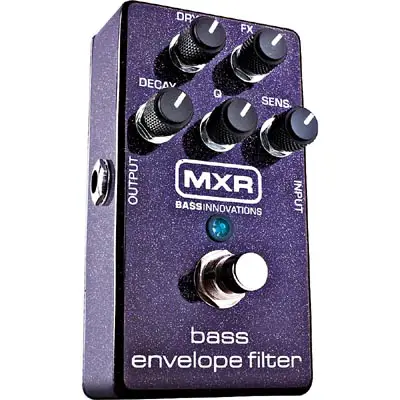How To Play Bass In A Band: Hot Tips To Sound Great!
Making your bass lines stand out in a cover band can be a challenge. You didn’t get to write the songs so you didn’t get a chance to make sure your bass is getting the attention it deserves.
Luckily there are heaps of techniques you can use to make sure your bass line stands out amongst the band.
Playing in a cover band gives you the freedom to experiment with different styles of playing without having to write entirely new bass lines. Just because a bass line is prewritten doesn’t mean you have to play it note for note!

Tips to Stand Out Playing Bass In A Band
There’s more than one way to get noticed on bass when you are up on stage, and these techniques can really help the overall dynamics of your bands performance.
1. Adjust Your EQ settings to Stand Out
Making your bass stand out when playing covers is all about getting the bass sitting right in the mix. Adjusting the eq of your amp and bass can make your bass playing shine through the mix.
While it may seem like boosting the lows is the logical way to make your bass playing stand out when playing covers it’s actually the mids that you want to adjust.
While the bass is responsible for almost all of the lows in a cover band, boosting the mids instead will make your bass playing more prominent. This works because boosting the mids on your bass will make the notes you play sound fuller and in turn, easier to hear.
2. Stand Near & Practice with the Drummer
The best way to get your cover band sounding tight is to nail the drum and bass section of your band.
The biggest complaint you’ll hear about cover bands is that they sound sloppy or unprofessional. This is not such a common complaint with bands that play original songs, here’s why.
When you play covers live you’re playing songs that people are already familiar with, this makes it easier for people to notice when your performance is lacking. So while people may not know exactly why the song isn’t sounding how they remember it they will notice!
Usually, the reason a cover can sound sloppy is because the drum and bass aren’t in sync. The drum and bass of a band are what hold down the main groove and rhythm of the song. Basically, they play the soul of the track, this is the part people dance and move to.
If the drum and bass aren’t in sync it puts the whole performance out of sync!
So if you want your cover band to nail the foundation of the songs you’re performing dedicate time to practicing with the drummer so that you also act as a single instrument together.
If people are struggling to dance to one of their favorite songs because the groove is off they are going to notice and might even get a bit upset about it!
3. Add Dynamics to Improve Bass Lines
It can be tempting to stick to playing the root notes of your bass line one by one in order to keep the bass line locked in. This can start sounding a little boring eventually, not to mention it can get boring to play as well.
A great way to improve your bass lines is to add some more dynamic ways of playing to breathe some fresh air into your performance.
One of the ways you can bring dynamics to your bass lines is by using slides. Slides add motion and funk to the way your bass sounds. By sliding up or down to a note you’re adding a feeling of flow and anticipation to your performance.
Sliding can allow you to move smoothly between the highest and lowest notes on your fretboard without it feeling sudden or jarring. This brings us to another tip for adding dynamics to your bass lines.
Utilizing the whole fretboard is essential for creating dynamics in your bass lines. Playing your bass line around the same spot on your bass guitar can make your basslines sound overly repetitive, and while that is kinda the point of a bass line there are ways to keep the rhythm flowing while adding some flavor to it.
By moving the bass line between the low end of the fretboard and the high end you can create a secondary rhythm to your performance. While you’re still playing notes in the same scale by playing them higher or low you get a different intonation to the notes which gives the bass line a bouncier feel.
In combination with slides, this makes your bass playing sound way more interesting and dynamic.
4. Develop Your Bass Fills and Improvisation Skills
Another great way to make your bass stand out in a cover band is to learn how to use bass fills and improvisation to make the bass lines your own.
While you may be playing someone else song, that doesn’t mean you have to play it exactly as the original band did. If anything playing it a bit differently is sure to turn a few heads.
By getting better at improvising and adding fills to your bass lines you can add little changes to songs that can give them a different feel or just to remind people that they’re hearing a live band and not a pre-recorded song.
The great thing about covers is that you’ve already got a whole song to play around with. This means you can take risks and try new ways of performing it and you’ll always have the original bass line to fall back on should things go astray.
When playing in a cover band think of the original bass line as a blueprint and stamp your own personality into it through improvisation.
5. Use Pedals That Make Your Bass Lines Stand Out
You might be wondering why guitars get to have fun with all the pedals! Well we think the same way and fortunately, there are some great types of pedals that can make your bass lines stand out in the mix.
Using a compressor pedal on a bass guitar is a straightforward and effective way to fatten up your bass lines and keep them sounding consistent throughout a song.
A compressor acts as a way to balance your tone. It does this by reducing the difference in volume between your loudest and quickest notes, giving it a more consistent sound. It also increases the sustain of your notes making it easier to keep your bass sitting evenly with the rest of the band.
A great compressor to use for bass is the MXR M87 Bass Compressor.

Check out the MXR Bass Compressor at:
Another great way to bring your bass lines to the forefront of a performance is with a Bass Envelope Filter.
A bass envelope filter works by filtering out different frequencies of your bass guitar. This lets you highlight the tones in your bass lines that you want to exaggerate or cut out the ones you don’t want. The most common use for a bass envelope filter is to boost the low end and give it a more distinctive sound.
These effects are heavily used in any kind of funk music and create the iconic tone we all know so well. The reason these effects are so common in funk is because of how important bass is in funk music. It can create sounds from the iconic higher wah type sounds or it can be used to filter out the highs and give your bass a deeper rounder sound.
Our pick for a bass envelope filter is the MXR M82 Bass Envelope Filter.

See the MXR Bass Envelope Filter at:
Do You Need an Expensive Bass for Gigging?
You don’t need a top-of-the-range bass to get into gigging. Different basses don’t differ in sound as much as different guitars do. A lot of what makes a bass sound good comes down to how you play it and how to set the levels on your amp.
You’re more than ready to play a gig with a cheap bass as long as you play it properly and spend some time making sure you’ve got your amp set up right to mix well with the rest of the band.
These days cheap instruments are can be of fantastic quality. This wasn’t always the case, cheap instruments used to be lazily put together and prone to loose screws and general degradation (especially if taking it out on the road).
These days a $150-$400 bass guitar will come with great build quality that won’t fall apart after a few gigs. These guitars won’t come with the highest quality woods or finishes, but they will give you a sound that is good enough for the stage!
4-String Bass vs 5-String Bass: Which Sounds Best?
A 4 string bass and a 5 string bass won’t sound particularly different to the ears of your audience but it will give you more options for creating interesting bass lines if you’re feeling limited by only 4 strings.
5 string basses come in 2 different setups. Typically you either get an extra low B string before the E, or you get an extra high C string after the G string.
Adding an extra low string gives you the chance to extend your band’s low range even further. As pointed out by some of the pros that play 5 string basses, there are certain keys that if songs are in, allow you to play them an entire octave lower if you have a 5 string bass.
If you decided to get a 5 string bass with an extra high string you can bring out some punchier sounds from your bass. This can make your bass lines extra funky and almost sound like a part of a lead guitar.
Extending the range of your bass won’t make it sound ‘better’ but, it will give you more options and is useful if trying to add dynamics to your performance.



